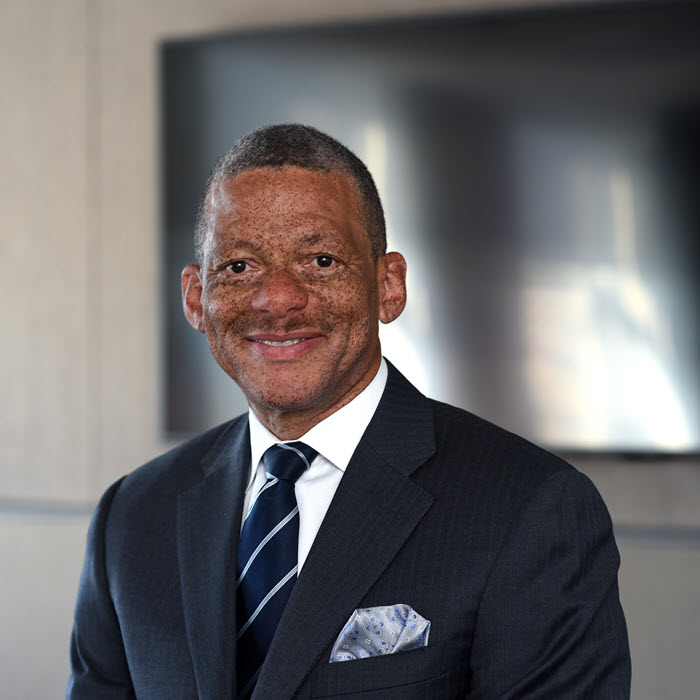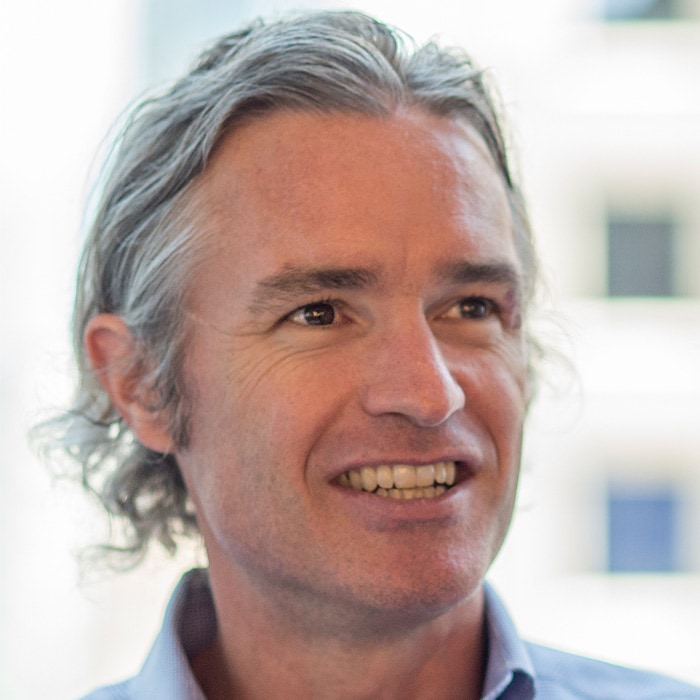Five in 5: Scenario planning for the energy sector has been saved

Perspectives
Five in 5: Scenario planning for the energy sector
Strategies and insights for the future of the energy industry
It's tricky to envision what tomorrow’s energy landscape could look like especially in the context of an accelerated energy transition. This chapter of Five in 5 offers quick-takes from Deloitte ER&I leaders on how scenario planning for the energy sector can help companies hit the ground running when opportunities during the energy transition inevitably come their way.
1. What is driving the need for scenario planning for the energy sector when considering the energy transition?
Stanley Porter: By 2035, organizations in all industries, including ER&I, will be operating in a vastly different energy landscape, and they need to prepare for it now. Previous energy transitions took generations—this one is happening in a mere 30 years. And, for the first, time, we’re removing a primary fossil fuel—carbon—from the resource mix. We know what we are going to replace it with—solar, wind, and other alternative energy sources—but we don’t yet have in place the infrastructure and technology we need to do this at scale.
Geoff Tuff: We no longer live in a world that’s impacted primarily by linear change with reasonably predictable outcomes; today’s organizations are operating amid great uncertainty and exponential change. So, as we think about the Future of Energy, we have to do a better job planning and allocating capital in the face of that uncertainty. One way to do this is to get out of the business of trying to predict the future and acknowledge that we don’t know precisely how it’s going to play out. The only way we can act in the near term is to plan for multiple, equally plausible versions of the future. That’s why scenarios should be an essential element in every energy company’s—in fact, every company’s—strategic planning process.
2. What’s the thinking behind Deloitte’s Future of Energy scenarios?
Stanley Porter: Plenty of uncertainties are in play as we journey to the Future of Energy, but based on Deloitte research, we developed four plausible future scenarios. We expect these scenarios—which we named Ready, set, innovate; One team, one dream; Rising tide; and Me and my resource—to be one valuable frame for all ER&I companies to consider how the future might impact their core business.
Geoff Tuff: Our scenario framework is a 2x2 table divided into four quadrants by two axes: global dynamics and societal response to climate change. At one endpoint of the global dynamics axis is an open economy where everyone’s working together to achieve common goals—whether those goals have to do with climate or not. At the other endpoint of that axis is regionalization, which emphasizes disaggregated, independent problem-solving. The second axis describes the societal response to climate change (and taking steps to address it): one endpoint is a proactive push from society, the other is reactive. The framework’s four quadrants—our scenarios—represent guideposts that can help leaders make decisions and act in a flexible way that allows their organizations to earn, learn, and influence their environments as the future unfolds. The scenarios can manifest at varying degrees, in varying combinations, at varying times, and in varying parts of your business.
Stanley Porter: No single scenario is going to fully materialize for the Future of Energy overall. The scenarios are not clear-cut predictions. Rather, they are hypotheses in the form of data-driven stories about tomorrow to help drive better decisions today.
Geoff Tuff: The only thing I’m 100% sure of is that none of these four scenarios will come true in their entirety. However, each is sufficiently plausible that any organization can plan against them and place bets based on their relative belief in any one of them coming true: allocating investments based on the markets it serves and the regions in which it operates. Every organization is going to have a different perspective on which of the four scenarios is most plausible and/or desirable … which means that, by definition, bets across the industry are going to vary. As we all acquire more information about how the future is actually unfolding, those bets should necessarily shift.
3. What challenges might organizations face as we progress through the energy transition and the future of the energy industry?
Geoff Tuff: Each organization’s specific challenges will depend greatly on where and how it operates, but, in general, there likely will be a short-term disconnect between investor expectations and the moves a company needs to make for the energy transition. How do you deliver returns to investors today as you better prepare for tomorrow? One option is to operate your core business (and invest responsibly behind it) for as long as it’s relevant, and work with others to set up new business models to deliver future-focused capabilities. One reason for scenario planning for the energy sector is that it enables companies to consider different investment profiles moving forward. Ultimately, it comes down to portfolio allocation versus all-in bets.
Stanley Porter: Energy companies have made capital-intensive investments in platforms, wells, and other infrastructure that may not come online for 30 years. Now they have to add energy transition and decarbonization considerations to their financial decisions and capital allocations. Will they participate in the new energy ecosystem to accelerate scalable, commercial technology solutions to address challenges arising from the four possible scenarios? Are they prepared to decommission existing energy assets and invest in novel approaches to meet investors’, activists’, and regulators’ low-carbon aspirations? Capital markets, broadly speaking, are expecting organizations to move forward with decarbonization initiatives. But investors also want and need a better understanding of the infrastructure that will be part of the solution and the portfolio changes that companies plan to make.
4. What functions/individuals within an organization should be exploring the scenarios?
Stanley Porter: Integrated resource planning is a must. At an executive level, the CFO and COO are essential scenario participants because altering the portfolio asset mix is a capital allocation issue that will directly impact operations. And, of course, all the major functions should contribute to the process.
Geoff Tuff: Ultimately, scenario planning for the energy sector may result in shifting financial assets in the short term to operate differently in the long term, so everyone—from strategic planning to finance to impacted business units—needs to be involved, aligned, and in agreement that this is something worth investing in.
5. What steps should organization leaders take to begin their energy transition planning?
Stanley Porter: To a certain extent, most of the organizations Geoff and I work with are already planning for the energy transition. Some use the scenarios to identify where they are on their journey and to develop a framework for next steps. Deloitte’s Climate Hub, a next-gen set of planning and execution tools, also can help companies prepare for the future.
Geoff Tuff: Climate Hub has multiple components, including a client portal/planning space and decarbonization tool, so users can model at an asset level various decarbonization pathways and potential portfolio investments to achieve the goals they’ve set for their own energy transition.
You know, this may sound unlikely, coming from a lifelong strategist, but strategy alone will not win the day. No one as yet has figured out exactly what they need to do for the next 10 or 15 years in order to create future competitive advantage. The consensus is to proactively prepare for the energy transition, and our scenarios can help companies figure out how to do this. But leaders also need to implement more dynamic planning cycles that shift capital allocation from an annual process to a continuous one that capitalizes on faster and richer data flows to guide investment decisions in this dynamic, evolving energy landscape.
Want to learn more about the Future of Energy and scenario planning? Check out these Deloitte publications:
The 2030 decarbonization challenge
The path to the future of energy
Energy scenarios in focus
Planning amidst an uncertain future for the energy industry
Recommendations
Illuminating possibility in the future of energy
Illuminate your energy, resources, and industrial future. See how to harness GenAI to enhance innovation and shape a sustainable tomorrow.
Low-carbon industrial hubs
Driving deep decarbonization for industry




